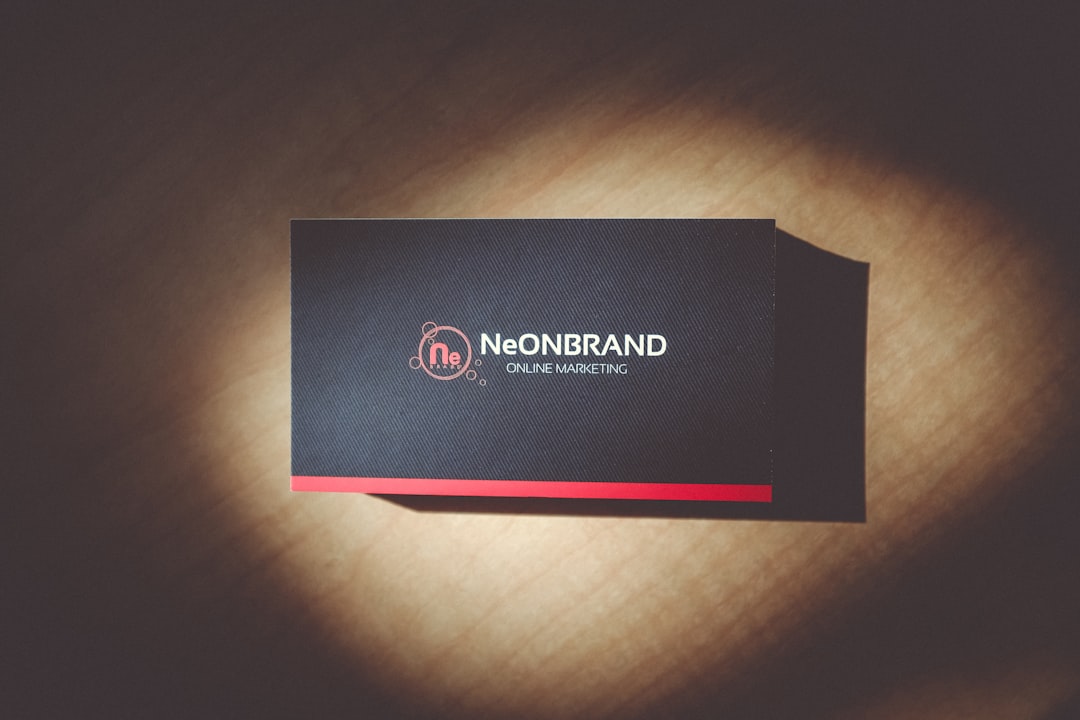Networking is an essential aspect of any career, whether it’s in business, education, or any other field. It’s all about building relationships, finding new opportunities, and ultimately advancing your career. In this blog post, we’ll explore the importance of networking and how it can help you succeed in your professional journey.
When it comes to networking, many people perceive it as a task that requires a lot of effort and can be time-consuming. However, it yields significant long-term results if you invest in building and maintaining professional relationships. Notably, networking helps you widen your circle and strengthen your connections, both vital components in progressing your career.
Through networking, you get the opportunity to meet with people who share similar interests and are willing to help you achieve your goals. You can gain insights into what works and what doesn’t, identify new opportunities, and get guidance on the right path to take. In essence, networking can help you build a supportive community in your professional life.
In conclusion, networking should be a priority for anyone who wants to excel in their career. It’s not just about exchanging business cards or having a cup of coffee with a colleague or client; it’s about building meaningful, long-lasting relationships that can provide valuable insights, support, and opportunities for your professional journey. In the next section, we’ll explore the first step in networking: making a memorable entrance.
The First Impression: Making a Memorable Entrance
When it comes to networking, the first impression can make a lasting impact. It’s essential to put your best foot forward and make a memorable entrance. Whether you are attending a networking event, meeting someone for coffee, or joining a new social group, you want to make sure you leave a positive and lasting impression.
The first step to making a memorable entrance is to dress professionally and appropriately for the occasion. It’s essential to know the dress code of the event you’re attending to ensure you don’t stand out for the wrong reasons. If you’re unsure of what to wear, it’s always better to overdress than underdress.
Another key factor in making a good first impression is body language. Your posture, eye contact, and handshake can all contribute to how others perceive you. Stand up straight, make eye contact, and offer a firm but not too firm handshake. This will convey confidence and show that you are interested in the person you are meeting.
When introducing yourself, don’t just recite your name, job title, and company. Try to find common ground by asking questions, finding out the person’s interests, and having a genuine conversation. People are more likely to remember you if you show interest in them and make a connection.
Lastly, it’s crucial to be yourself. Don’t try to impress people by pretending to be someone you’re not. Be authentic and true to yourself, as this will create a long-lasting impression and a solid foundation for building relationships.
In conclusion, making a memorable entrance is crucial for networking success. Dress professionally, convey confidence through body language, find common ground through conversation, and be yourself. Following these tips will help you make a lasting impression and put you on the path to building valuable connections.
Try to find common ground by asking questions, finding out the person’s interests, and having a genuine conversation.
Building Relationships: Maintaining Connections
In networking, making a strong first impression is important, but equally important is building and maintaining relationships with the people you meet. Building genuine and long-lasting relationships is what enables you to reap the benefits of networking in the long run.
One effective way to build relationships is by regularly following up with your contacts. After meeting someone at a networking event, it’s a good idea to send a brief email thanking them for their time and expressing your interest in keeping in touch. Be sure to personalize your message and mention any specific points from your conversation that stood out to you.
Another way to maintain connections is by offering your help to your contacts whenever possible. Consider introducing them to someone in your network who might be able to help them with a problem they’re facing, or offer to write a recommendation for them on LinkedIn. By helping others, you’re not only strengthening your relationships, but also building goodwill and enhancing your own reputation.
It’s also a good idea to stay in touch with your contacts through regular communication. You can do this by sending them interesting articles, commenting on their social media posts, or inviting them out for coffee or lunch. By staying top of mind, you’re more likely to be the first person they think of when a new opportunity arises.
Remember that building relationships takes time and effort, but it’s worth it in the end. By investing in your network, you’re creating a valuable resource that can help you in your personal and professional life for years to come. So, take the time to build genuine connections with the people you meet and watch your network grow and flourish over time.
Building genuine and long-lasting relationships is what enables you to reap the benefits of networking in the long run.
The Power of Giving: Helping Others
When it comes to networking, many people focus on what they can gain from others. However, the power of giving should not be underestimated. Helping others can not only benefit the person receiving help but can also have a significant impact on your own networking endeavors.
One of the most important things you can do when trying to help others is to take the time to truly understand their needs. Ask thoughtful questions and listen intently to their responses. Once you have a clear understanding of what they need, you can offer assistance in a way that is truly beneficial.
Giving back to others can take many forms. Perhaps you can introduce someone to a contact in your network who can help them achieve their goals. Maybe you have knowledge or expertise in a particular area that can be beneficial to others. Or maybe you can simply offer a kind word of encouragement or a listening ear when someone needs it most.
When you give of yourself generously, you are building a reputation as someone who is trustworthy, reliable, and genuinely interested in helping others. This, in turn, can lead to more opportunities for you to connect with others who are equally committed to building strong, supportive relationships.
It’s important to note that giving should never be done with the expectation of getting something in return. Instead, it should be a selfless act that is done purely out of a desire to help others. However, it’s also important to recognize that giving can ultimately benefit you and your own networking efforts.
By helping others, you are creating a positive reputation for yourself within your network. This can increase your visibility, enhance your credibility, and ultimately lead to more opportunities for you to achieve your own goals. So, the next time you have the opportunity to help someone else, don’t hesitate to embrace the power of giving.
By helping others, you are creating a positive reputation for yourself within your network.
Expanding Your Reach: Utilizing Social Media
Networking today isn’t limited to in-person interactions; it has gone beyond traditional means, extending to social media platforms. Social media is a powerful tool that can be utilized to expand your reach and make new connections. According to World Bank, more than 3 billion people are active on social media across the globe, which is an immense untapped potential for networking.
LinkedIn, Twitter, Facebook, Instagram, TikTok, YouTube are some of the most popular social media platforms that can be utilized for networking. LinkedIn, specifically, is a platform that has been created for professionals to connect, share ideas, and expand their networks. It is an excellent platform for job seekers, recruiters, and people looking to make connections. It also allows professionals to join groups and discussions that cater to their field of interest.
Twitter is another platform that can be used for networking. It is a great platform to follow industry experts and thought leaders. This can help you gain valuable insights, knowledge and expand your network. Twitter chats or mini conversations on certain topics are also a great way to engage with others and increase your visibility.
Facebook and Instagram can be utilized to share your experiences and expertise by posting pictures, videos, or creating stories. These tools can be used to inform and engage new people in your network. It can also be used to participate in groups, bringing like-minded individuals together to share ideas, discuss trends, and gain new knowledge.
YouTube is another powerful platform that can be utilized to create and share high-quality content that can be useful to a specific niche. You can create channels that cater to a particular category of people, and people will subscribe and follow you. It is an excellent platform to showcase your personality and expertise, share your ideas, and educate others.
By leveraging social media platforms, you can gain visibility, build trust, and demonstrate your area of expertise to potential viewers. As a result, you can expand your reach and network with more people who share your interests and passions.
In conclusion, social media is a powerful networking tool that should not be ignored. It offers immense opportunities to connect with people beyond geographical barriers, allowing you to expand your reach and make valuable connections. By utilizing these platforms, you can stay connected with individuals in your industry, make new contacts, and increase your visibility as a professional.
It is an excellent platform for job seekers, recruiters, and people looking to make connections.
Navigating Networking Events: Strategies for Success
Networking events can be nerve-wracking for many professionals. You may have to meet new people, strike up conversations with strangers, and put your best foot forward to make new contacts. Those are some stressful situations! But fear not, here are some strategies to help you navigate networking events like a pro:
Do Your Research
Before attending any networking event, make sure you conduct thorough research on the attendees, speakers, and the agenda of the event. This will prepare you to initiate effective conversations and help you gain valuable information about the people you will be meeting. Take some time to study the industry and the people who are on your contact list so that you can have a good idea about what to talk over at the event.
Keep it Professional
Remember that you are attending a professional event and that you need to keep all your interactions professional. Dress professionally, be on time, and bring a set of business cards to introduce yourself. You want to give off an air of professionalism so that other attendees perceive you as a professional who can add value to their network.
Don’t Be Afraid to Introduce Yourself
It’s important to remember that everyone at the event is there to network, so don’t be afraid to introduce yourself to others. Make eye contact, offer a firm handshake, and introduce yourself with a confident smile. Take the initiative to ask them about themselves, their business, or their interests.
Listen More Than You Speak
Effective networking requires active listening skills, so listen attentively to the person you are speaking with. This shows that you value their input and respect their opinion. By listening before speaking, you can also gain a deeper understanding about their business, challenges or opportunities, and their interests.
Follow Up After the Event
Before you leave the event, make sure you exchange business cards with the people you meet. This makes it easy for you to follow up with them after the event. Don’t forget to send a “Thank You” note or an email within a day or two of the event. This helps you to stay top of mind for them and start building a lasting relationship.
Networking events offer unique opportunities to meet new people, develop your professional network, and gain valuable insights. Utilize these strategies to make the most of your time at the event and set yourself up for long-term success.
Navigating Networking Events: Strategies for Success
Networking events can be nerve-wracking for many professionals.
Conclusion: The Ongoing Benefits of Networking
Networking is not only essential for career growth and development, it is also a key component in building meaningful relationships. By leveraging your professional connections, you can increase your chances of advancing in your field, learning about new career opportunities, and staying up-to-date with industry trends.
Through networking, you can also give back to others by sharing your knowledge and expertise. By helping others, you can establish yourself as a thought leader and gain a reputation as a valuable resource.
Social media has become an indispensable tool for networking. By using platforms like LinkedIn and Twitter, you can expand your reach and connect with people all over the world. These digital platforms provide a great opportunity to showcase your skills and expertise, and can help you develop a strong personal brand.
Navigating networking events can be challenging, but with the right strategies, you can make a memorable impression and build lasting relationships. Remember that networking is not just about exchanging business cards, but about making meaningful connections with people who share your interests and passions.
In conclusion, networking is an ongoing process that can lead to numerous benefits both personally and professionally. By building and maintaining relationships, giving back to others, and utilizing social media, you can expand your reach and establish yourself as a thought leader in your field. So don’t be afraid to put yourself out there – the potential rewards are limitless!





